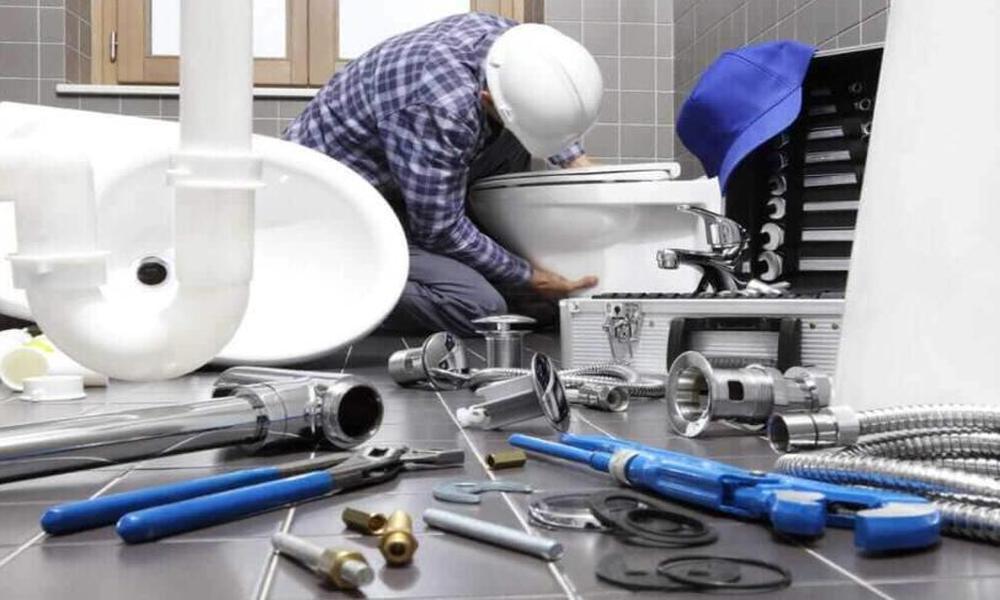Choosing the right plumbing pipes is crucial for every homeowner. The wrong pipes can lead to leaks, bursts, corrosion, and unnecessary utility costs over time. This article explores the top 5 plumbing pipe types for residential use today.
Overview
When selecting pipes, there are several key factors to consider:
- Durability – ability to withstand temperature, pressure, external damage
- Flow Rate – smooth water flow without buildup or corrosion
- Ease of Installation – Flexibility, connections, skill level
- Noise Levels – for waste lines running through the home
- Cost – both upfront and long-term
There are no perfect pipes. The ideal system uses a combination of supply and drain pipes based on the site’s needs.
- PEX Pipes
In most homes today, PEX (cross-linked polyethylene) has become the #1 choice for water supply lines.
Benefits:
- Extremely flexible: won’t burst from freezing or house movements
- Resistant to scale and corrosion: PEX resists mineral buildup, common in hard water areas
- Simple push-fit connections: use easy-to-install connections, making them a favorite for DIYers
- Cost-effective: more affordable than copper regarding material cost and installation
Use Cases:
PEX handles hot and cold water delivery and is frequently used in radiant floor heating. While very durable, it does need some protection from external damage.
- Copper Pipes
The traditional go-to, copper, remains an exceptional option.
Benefits:
- Incredibly durable: Copper pipes can last over 50 years to withstand extreme temperatures and pressures
- Withstands high heat: Copper handles both hot and cold water without risk of warping or melting.
- High resale value: If you ever replace your copper pipes, they have significant salvage value, making it a great investment.
Downsides:
- Difficult installation: Copper is rigid and requires soldering, so professional installation is often needed. This increases both the time and cost involved.
- Prone to pinhole leaks: Over time, internal corrosion can cause small leaks in copper pipes, especially in areas with acidic water.
Use Cases:
Use copper for any water or heating lines. Choose PEX over copper only for cost savings or more flexibility.
- CPVC Pipes
CPVC (chlorinated polyvinyl chloride) is a popular plastic pipe material for homes, especially for hot water delivery.
Benefits:
- High-temperature resistance: CPVC is rated for temperatures up to 200°F, making it ideal for hot water lines, including connections from water heaters.
- Corrosion and scale-resistant: Like PEX, CPVC resists corrosion and mineral buildup, ensuring smooth water flow for years.
- Easy to connect: CPVC uses solvent-welded joints, which means the pipes are bonded with glue, allowing for strong, leak-proof connections.
Downsides:
- Higher cost: While not as expensive as copper, CPVC can be pricier than PEX.
- Toxic fumes when heated: In case of a fire or extreme overheating, CPVC releases harmful fumes, which is a downside to consider in certain environments.
Use Cases:
CPVC is perfect for lines between the water heater and fixtures in high-temp applications where PEX isn’t rated.
- Cast Iron Pipes
Cast iron has stood the test of time for residential drain lines.
Benefits:
- Durability: Cast iron is nearly indestructible, with a lifespan exceeding 100 years. It can handle high-pressure and heavy loads, making it perfect for main drains.
- Noise reduction: One of the most significant advantages of cast iron is its sound-dampening abilities. Wastewater flows through cast iron pipes much more quietly than plastic pipes, a benefit in multi-level homes.
Downsides:
- Heavy: Cast iron is incredibly heavy, making it difficult and expensive to install.
- Flange leaks: Over time, the joints and flanges in cast iron systems can develop leaks, especially in older homes
Use Cases:
Cast iron is used for main drains and vent stacks. Avoid DIY installations.
- PVC Pipes
The #1 for residential drain systems today is PVC plastic:
Benefits:
- Lightweight and low-cost: PVC is easy to work with and requires no specialized tools or expertise, making it a budget-friendly choice for homeowners and professionals alike.
- Corrosion-resistant: PVC, unlike metal pipes, doesn’t rust or corrode, ensuring it maintains good flow rates over time.
- Easy connections: PVC pipes are joined using solvent welding, forming a leak-proof bond that lasts years.
Downsides:
- Less durable than metal: While corrosion-resistant, PVC is more prone to cracking under physical impact than cast iron or copper.
Use Cases:
Lighter and more affordable, PVC is the go-to plastic pipe for traps, drains, and vents today.
Get Expert Guidance Today
When selecting plumbing pipes for your home, it’s essential to evaluate your specific needs, budget, and site conditions. Whether it’s the flexibility and cost-effectiveness of PEX, copper’s heat resistance, or cast iron’s durability, combining the right supply and drainage pipes can offer a reliable system that has performed well for decades. Consult us to ensure your chosen pipes suit your home’s unique demands.


